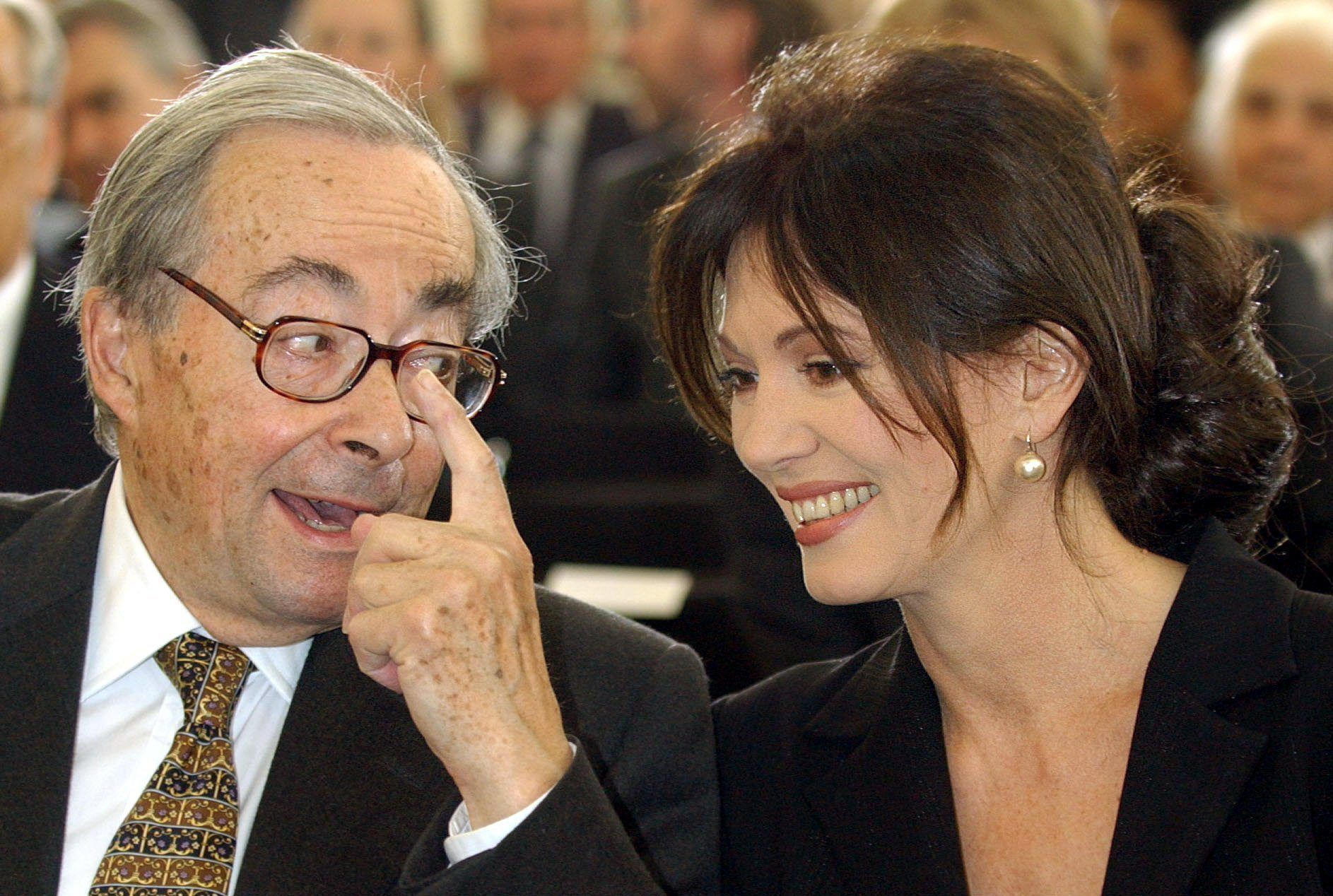
- Select a language for the TTS:
- UK English Female
- UK English Male
- US English Female
- US English Male
- Australian Female
- Australian Male
- Language selected: (auto detect) - EN
Play all audios:
On Sunday at Jewish Book Week I chaired a tribute to George Steiner, who died just over a year ago. I was joined by the distinguished Polish-born writer Eva Hoffman and Professor Bryan
Cheyette, who has been writing on Steiner since the 1980s. I can remember exactly where I was when I read the books by Steiner that really matter to me, perhaps especially _Language and
Silence_, _In Bluebeard’s Castle, _his selection of essays _No Passion Spent_, his memoir, _Errata_, and his fiction including _Anno Domini_, _Proofs & Three Parables _and _The Depths of
the Sea_. I have often wondered why these books matter so much to me. Four reasons stand out. First, as a Jewish student in the 1970s I was struck by the sense that here was someone who
was writing about the impact of the Holocaust on culture and literature at a time when _no other literary critic _was doing this. This mattered to me enormously. Steiner was one of the first
cultural critics to break the silence about the Holocaust. The great American critic Stephen Greenblatt wrote recently, “Steiner is one of the great, restless wanderers of modern criticism…
His astonishing intellectual career was a moving, emblematic refusal in the wake of Auschwitz to settle down to cultural business as usual.” These last words are crucial. What
distinguished Steiner more than anything else was his passionate sense that we could not “settle down to cultural business as usual”. Of course, we could continue to read and write about
great literature and music, but after Stalinism and the Holocaust we couldn’t pretend that nothing had happened. How only three years after the war, he wrote in _In Bluebeard’s Castle_,
could TS Eliot write a book on culture and say _nothing_ about what had been done? How could a great German philosopher like Heidegger support Hitler and how could we continue to read his
work as if he hadn’t embraced Nazism? In the second edition of his book on Heidegger, Steiner wrote, “I have sought to formulate certain questions about the interactions between, the
interpretations of, artistic, philosophic, and scientific achievements on the one hand, and the totalitarian barbarisms of the twentieth century on the other.” Second, Steiner introduced
to me – and to a generation of readers – the great central European Jewish writers and intellectuals of the early and mid-20th century. He opened up a whole cultural world to British
readers. As John Banville said a few years ago: “A door was flung open on what had been there all the time, at our backs, namely, our European heritage. He told us not to be cowed by
insularity or hidebound by small minds, but to look beyond the border.” Vienna, where his parents lived and Geneva, where he taught for twenty years, from 1974-94, are significantly close to
the Budapest of Lukács_,_ the Black Forest of Heidegger, the Paris of Lévi_–_Strauss and Sartre, the Prague of Jakobson and Kafka, the Vienna of Freud, Mahler and Wittgenstein – what he
once called, “the inner capitals of the twentieth century”. Third, Steiner wrote about what he called “the drama of encounter”. When I first met him in the 1980s we had lunch in a pub
outside Cambridge. “This,” he said, “is where IA Richards taught Empson.” He went on, almost in a whisper, that these tutorials later led to Empson’s classic work, _Seven Types of
Ambiguity_._ _For Steiner criticism was not about monographs. It was about these extraordinary encounters between the great figures of modern culture: how Heidegger, a Nazi, betrayed
Husserl, a great Jewish philosopher; Paul Celan, perhaps the greatest Jewish poet of the 20th century, going to visit Heidegger, one of the great German philosophers of the 20th century,
after the Holocaust; the hotel Zum Storchen where Nelly Sachs met with Paul Celan, “occasioning,” wrote Steiner, “… one of the indispensable poems in the German language.” Finally, there was
the question that ran through so much of Steiner’s work. How could the barbarism of the 20th century have emerged from the heartlands of central European culture? As he once wrote, “the
problem of the relations between culture and politics, between humane literacy and the politics of torture and mass-murder, was such as to put into question every aspect of the life of the
mind… The spheres of Auschwitz-Birkenau and of the Beethoven recital, of the torture-cellar and the great library, were contiguous in space and time.” That’s why he was so fascinated by
figures like Eliot, Heidegger, Lukács and Anthony Blunt, people immersed in writing about the great works of modern European culture, figures of towering genius, but also people who flirted
with anti-Semitism and Stalinism. How could these two things coexist in the same people? He wrote of “the central paradox of the co-existence in Heidegger of a philosopher of towering
stature and of an active partisan in barbarism.” That’s why George mattered to me. He made criticism exciting, he made it matter. And that’s why I remember exactly where I was when I first
read _Language and Silence_ more than forty years ago, as I sat by a gas fire writing notes in the margin with a red biro. A MESSAGE FROM THEARTICLE _We are the only publication that’s
committed to covering every angle. We have an important contribution to make, one that’s needed now more than ever, and we need your help to continue publishing throughout the pandemic. So
please, make a donation._




![[withdrawn] martin john manning (nps/wr/033898): application made to abstract water](https://www.gov.uk/assets/static/govuk-opengraph-image-03837e1cec82f217cf32514635a13c879b8c400ae3b1c207c5744411658c7635.png)


